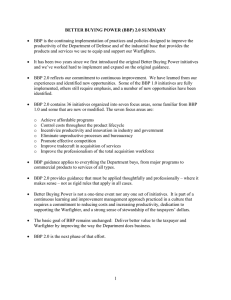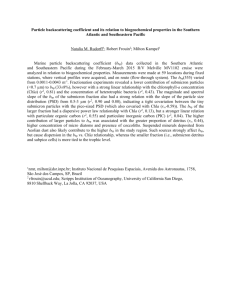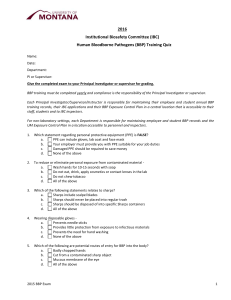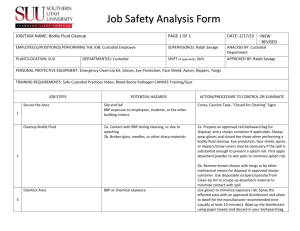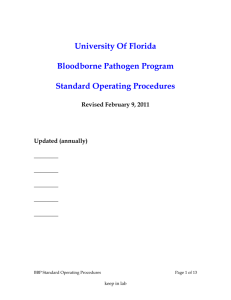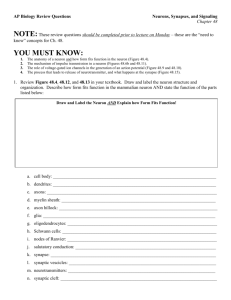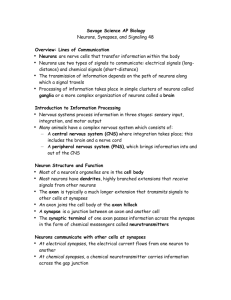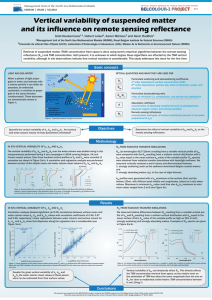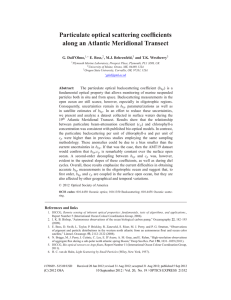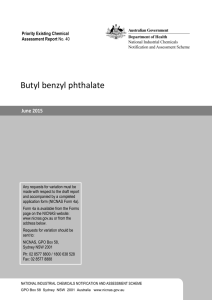Reverse-Engineering the Brain
advertisement
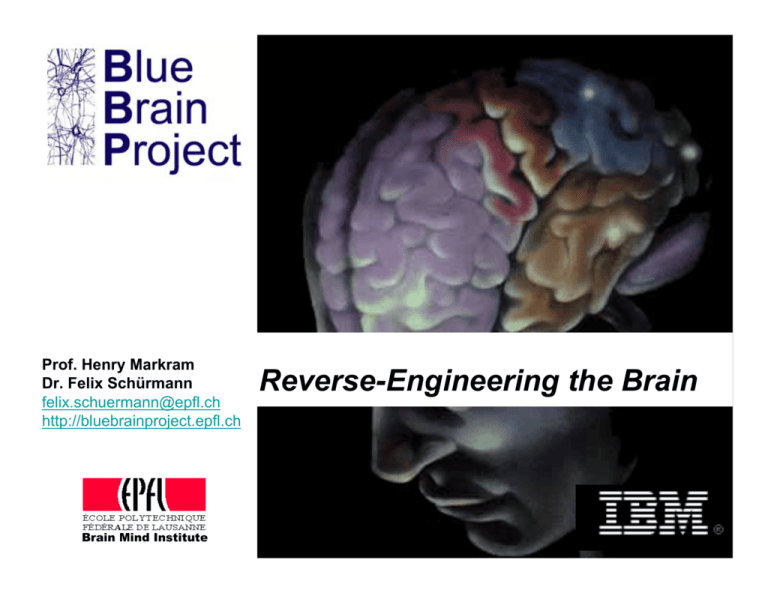
Prof. Henry Markram Dr. Felix Schürmann felix.schuermann@epfl.ch http://bluebrainproject.epfl.ch Brain Mind Institute Reverse-Engineering the Brain © Blue Brain Project The Electrophysiologist’s View BBP BBP BBP © Blue Brain Project Accurate Models that Relate to Experiment LBCÆPC SBCÆPC NBCÆPC BTCÆPC MCÆPC © Blue Brain Project BBP Phase I: Neocortical Column Create a faithful “in silico” replica at cellular level of a neocortical column of a young rat by the means of: • reverse engineering the biology components • forward constructing functional mathematical models • Building 10,000 morphologically complex neurons • Constructing a circuit with 30,000,000 dynamic synapses • Simulating the column close to real-time © Blue Brain Project Building and Simulating the NCC BBP © Blue Brain Project The Electrocphysiologist’s View - Revisited BBP BBP BBP © Blue Brain Project BBP Phase I: « in vitro » vs. « in silico » BBP BBP BBP in silico in silico in vitro BBP in vitro © Blue Brain Project Level of Detail 1 0 , 0 x 0 0 Channels Compartment ~20HH style channels/compartment Neuron ~350compartments/neuron Synapses A Rat’s Neocortical Column: IT Challenge: • ~1mm^3 • 6 layers • > 50 morphological classes • ~340 morpho-electrical types • ~200 types of ion channels • 10,000 neurons • 18 types of synapses • 30,000,000 synapses • 3,500,000 compartments • passive (cable, Gauss Elimination) • active HH style channels • 30,000,000 synapses ~3,000/neuron • dynamic • Æ reporting 1 value/compartment Æ 140GB/biol sec © Blue Brain Project Usage of BG/L in the BBP Dedicated 4 rack BG/L @ EPFL with 8192 processors, 2TB of distributed memory, 22.4 TFlop (peak) ÆUsed throughout all parts of the project ÆAllows iteration of complete process within a week • Building: Run evolutionary algorithms for fitting of thousands of single cell models to data typical job size: 2048 procs S. Druckmann et al., A Novel Multiple Objective Optimization Framework for Constraining ConductanceBased Neuron Models by Experimental Data, Frontiers in Neuroscience 2007 • Constructing: Run dedicated algorithm to establish connectivity between cells typical job size: 8000 procs J. Kozloski et al., Identifying, tabulating, and analyzing contacts between branched neuron morphologies, IBM Journal for Research and Development, Issue 52, Number 1/2, 2008 • Simulating: Run simulation of cell networks typical job size: 8192 procs M. Hines et al., Fully Implicit Parallel Simulations of Single Neurons. Journal of Computational Neuroscience, accepted © Blue Brain Project A Grand Challenge Problem A Rat’s Neocortical Column 10,000 (10^4) neurons 30,000,000 (10^7) synapses 20,000X 4 rack BG/L ~10^4 cores ~1 neuron/core Æ 1:10-100 time penalty ~10^13 Flops (~10TeraFlops) ~10^12 Bytes RAM (TeraBytes) A Rat’s Brain PetaScale HPC ~10^5-10^6 cores ~10^15 Flops (PetaFlops) ~10^14 Bytes RAM (~100TB) ~500 neurons/core Æ 1:5,000 - 50,000 time penalty 200,000,000 (10^8) neurons 10^11 synapses 1,000X A Human’s Brain 10^11 neurons 10^14-10^15 synapses © Blue Brain Project ExaScale HPC ~10^18 Flops (ExaFlops) ~10^17 Bytes RAM (~100PB) …but you wanted to give me 10^23 – right? 10^18 = ExaFlops 1 sec biological time = 1/2 day computation Æ unique brain research facility 10^21 = ZettaFlops 1 sec biological time = few seconds computation Æ brain-scale plasticity simulations Æ desk-side brain simulations 1 year biological time = 1 day computation Æ brain-scale developmental simulations Æ personalized models 10^23 = 100 ZettaFlops But all this scaling is based on electrical models… • • • • • Glial cells Vasculature Ligand-gated ion channels Second-messengers Receptors • • • • Organelles Bio-chemical pathways/cascades Proteins, Protein-interactions Genes Hodgkin-Huxley Æ Langevin Description Æ Fokker-Planck Æ Master Equation Æ Ensembles of stochastic channels Æ Reaction/Diffusion ModelsÆ … © Blue Brain Project What can we learn for Building Computers? • The general recommendations from biology are clear Æ go analog (energy) Æ go local persistent memory (energy) Æ go sparse activity (energy density) Æ go 3D (integration, connectivity) Æ go distributed encoding (robustness) • Along the way we will be able to extract principles for specific applications Ægeneric building principles (structure, composition, connectivity) Æspecialization rules (circuit rewiring) Ælearning rules (local learning, homeostatic principles) • We will have to go quite some way with computers that at least look like digital Von-Neumann machines to reverseengineer biology and consolidate our knowledge in a model © Blue Brain Project The People Behind BBP © Blue Brain Project
